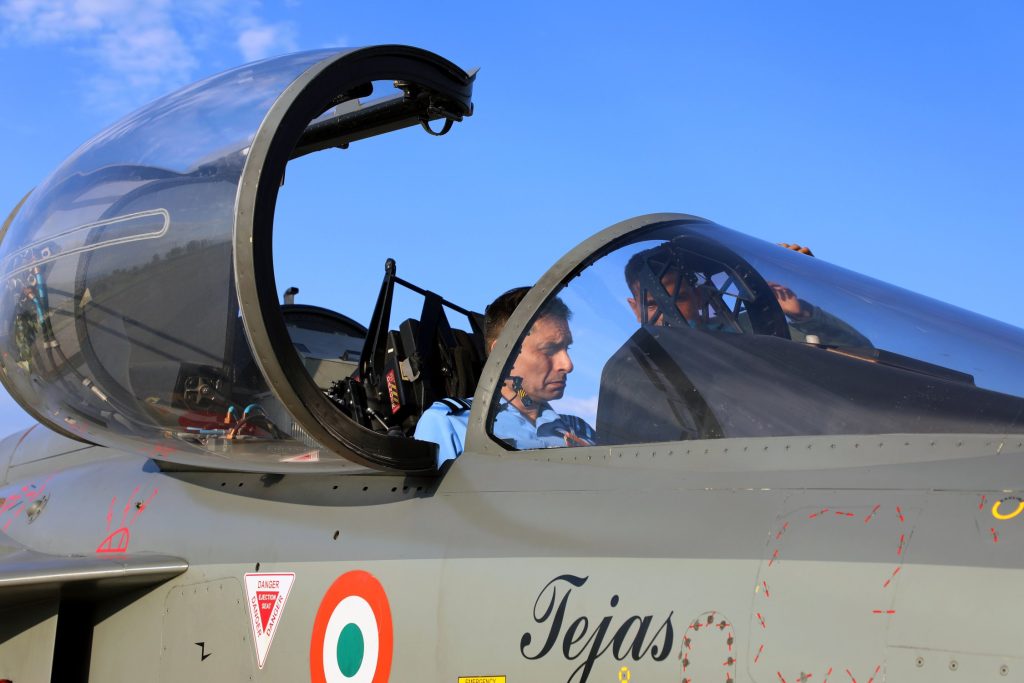
This picture of an Indian Air Force Tejas fighter at the Awantipur air force station in Jammu & Kashmir has rekindled speculation that new squadrons of the homegrown combat jet could next find a home at forward bases close to India’s frontlines with its two chief adversaries — China and Pakistan.
The photograph shows Air Marshal Pankaj Mohan Sinha, chief of the IAF’s Western Air Command, in the cockpit of a Tejas at the base. While the IAF’s two Tejas squadrons are based in Sulur in southern India, Tejas jets have seen periodic limited deployments — called detachments — to other bases including Jodhpur, Gwalior and Kalaikunda. But Awantipur is as ‘frontline’ as it gets. The number of Tejas fighters on site could be anywhere between four and seven.

Basing squadrons of a new fighter at forward bases implies overall confidence in the type, since frontline bases typically involve a large volume of flights, a higher degree of pressure on maintenance, turnaround and availability of aircraft — and their early use in the order of battle, should conflict break out. Ahead of virtually certain forward basing, detachments for exercises allow crews to establish the Tejas footprint at forward bases like Awantipur, allowing planners to nail down locations where new jets will populate squadrons.

Livefist has argued before that the Tejas is more than ready now to replace the IAF’s last MiG-21 squadrons, all of which are frontline units. You can read our detailed piece on that here.
The Indian Air Force does not discuss aircraft deployment plans, but increased detachment activity involving the indigenously developed jet is at least an indicator that the IAF has its eye on the squadrons of the improved Tejas Mk1A that will be incoming starting February 2024. The $6.5 billion deal for 83 Tejas Mk1A fighters signed in January 2021 will give the IAF four new squadrons. The IAF is also known to be processing paperwork to quickly order 50 more Tejas Mk1A jets, or at least two more squadrons.
The IAF’s two squadrons of the LCA Mk1 are populated by a total of 40 aircraft across operational capability tiers. The Mk1A is a significantly improved iteration of the Tejas that’s better armed, better performing, superior survivability and avionics and crucially easier to maintain and turn around. You can read our detailed piece on improvements the Mk1A brings to the table here.

The IAF’s Tejas fighters wield a variety of strike weapons and air-to-air weaponry, including Russia R-73, Israeli Python and Derby missiles. Future integrations will give the Tejas the ability to carry weapons like the ASRAAM, Indian Astra beyond visual range missile and the Russian R-77.
2023 has been a busy for the IAF’s Tejas crews. In March, five Tejas jets flew out of India on the type’s first foreign air power exercise with the UAE Air Force.

Meanwhile, the vastly improved LCA Mk2 program, developing a larger, more powerful and canard wing-sporting derivative of the original Tejas, is picking up pace.

After project sanction less than a year ago to support a program that should give the IAF 20 squadrons of the type, India and the United States announced a partnership to assemble the GE F414 engine, the engine that will power the LCA Mk2, in India. The LCA Mk2 is on course for a first flight in 2025.
